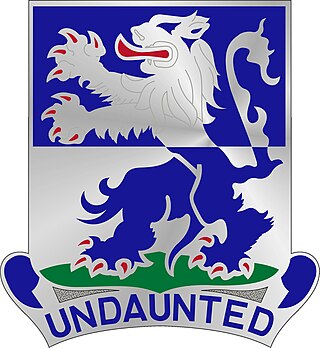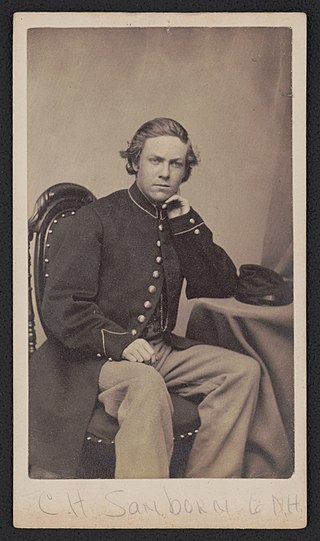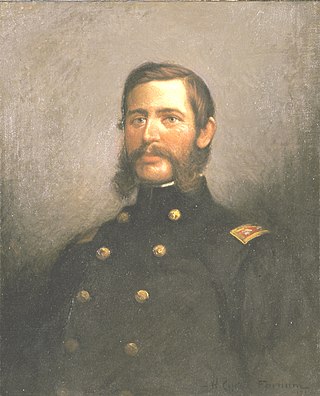Service
The 5th Rhode Island Infantry Regiment was organized at Providence, Rhode Island. The regiment rendezvoused at Camp Greene in October, 1861, was transferred to Camp Slocum at Providence and mustered into U. S. Army service for three years as a battalion of five companies on December 16, 1861.
The battalion left Providence for Annapolis, MD to join Burnside's expedition to North Carolina. At Annapolis it was assigned to the 3rd brigade under Gen. Parke, embarked for Roanoke Island, NC where it participated in the battle on Feb. 8, 1862, and was also in the Battle of New Berne on March 14. It was then posted at Newport City until the siege of and assault on Fort Macon, in which it was active, after which it went into camp at Bogue banks and later at Beaufort, SC.
An additional five companies had been raised in Providence and mustered in on December 27, 1862. These companies joined the battalion in Beaufort where a new regimental organization came into being.
In April, 1863, the Sth went to the relief of Little Washington until April 14, when the enemy gave up the siege as hopeless and withdrew. Returning to New Berne the regiment reoccupied Camp Anthony and garrisoned Forts Totten and Rowan. In July the regiment ceased was reorganized as the 5th Rhode Island Heavy Artillery Regiment.

The 5th New York Infantry Regiment, also known as Duryée's Zouaves, was a volunteer infantry regiment that served in the U.S. Army during the American Civil War. Modeled, like other Union and Confederate infantry regiments, on the French Zouaves of Crimean War fame, its tactics and uniforms were different from those of the standard infantry.
The 9th New Jersey Infantry Regiment was an American Civil War infantry regiment from New Jersey that served from October 1861 through July 1865 in the Union Army. The regiment got its nickname, Jersey Muskrats, during the Battle of Roanoke Island when they successfully "sloshed through shoe sucking mud into waist deep water in "division" formation", giving the regiment a two-company front flanking the enemy. The regiment was the last to leave the state in 1861 but the first to see battle.

The 3rd New York Infantry Regiment was an infantry regiment that served in the Union Army during the American Civil War. It is also known as the Albany Regiment.

4th Rhode Island Infantry Regiment was organized during the American Civil War from 1861 and 1864.

The state of Rhode Island during the American Civil War remained loyal to the Union, as did the other states of New England. Rhode Island furnished 25,236 fighting men to the Union Army, of which 1,685 died. The state used its industrial capacity to supply the Union Army with the materials needed to win the war. Rhode Island's continued growth and modernization led to the creation of an urban mass transit system and improved health and sanitation programs.

The 9th New York Infantry Regiment was an infantry regiment that served in the Union Army during the American Civil War. It was also known as the "Hawkins' Zouaves" or the "New York Zouaves."

The 119th Infantry Regiment was an infantry regiment of the United States Army. The unit was an organic element of the 30th Infantry Division of the United States Army.

The 6th New Hampshire Infantry Regiment was an infantry regiment that served in the Union Army during the American Civil War.

Battery D, 1st Rhode Island Light Artillery Regiment was an artillery battery that served in the Union Army during the American Civil War.
Battery F, 1st Rhode Island Light Artillery Regiment was an artillery battery that served in the Union Army during the American Civil War. The battery briefly served as cavalry, March 20 to May 18, 1862.

The 64th New York Infantry Regiment, the "First Cattaraugus Regiment", was an infantry regiment of the Union Army during the American Civil War.
The 11th Connecticut Infantry Regiment was an infantry regiment that served in the Union Army during the American Civil War.

The 19th Regiment Massachusetts Volunteer Infantry was an infantry regiment that served in the Union Army during the American Civil War.
The 25th Regiment Massachusetts Volunteer Infantry was an infantry regiment that served in the Union Army during the American Civil War.

3rd Rhode Island Heavy Artillery Regiment was a heavy artillery regiment that served in the Union Army during the American Civil War.

The 49th New York Infantry Regiment was an infantry regiment in the Union Army during the American Civil War.

The 50th Regiment Pennsylvania Volunteer Infantry was an infantry regiment that served in the Union Army during the American Civil War.

The 51st New York Infantry Regiment was an infantry regiment in the Union Army during the American Civil War.

The 38th New York Infantry Regiment was a two-year infantry regiment in the U.S. Army during the American Civil War.

The 15th New York Engineer Regiment was an engineer regiment that served in the Union Army during the American Civil War. The regiment was initially raised as the 15th Volunteer Infantry, but was converted to an engineer regiment after it arrived in Washington DC. It served as an engineer unit for the Army of the Potomac (AoP) from the Peninsula campaign through the Appomattox Campaign.
This page is based on this
Wikipedia article Text is available under the
CC BY-SA 4.0 license; additional terms may apply.
Images, videos and audio are available under their respective licenses.










